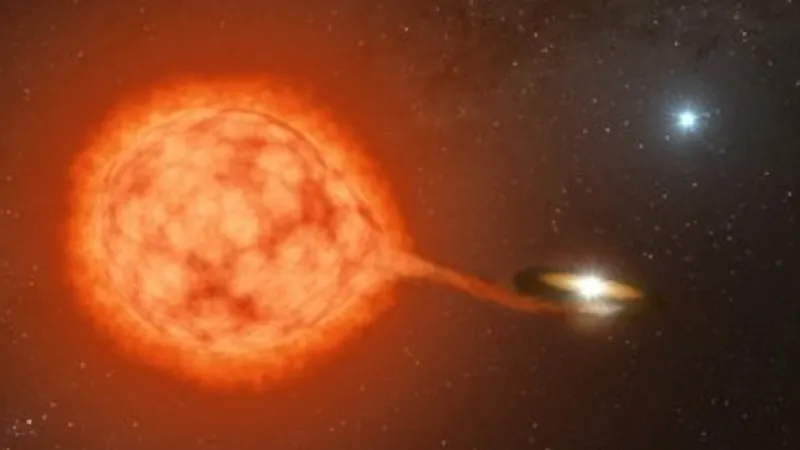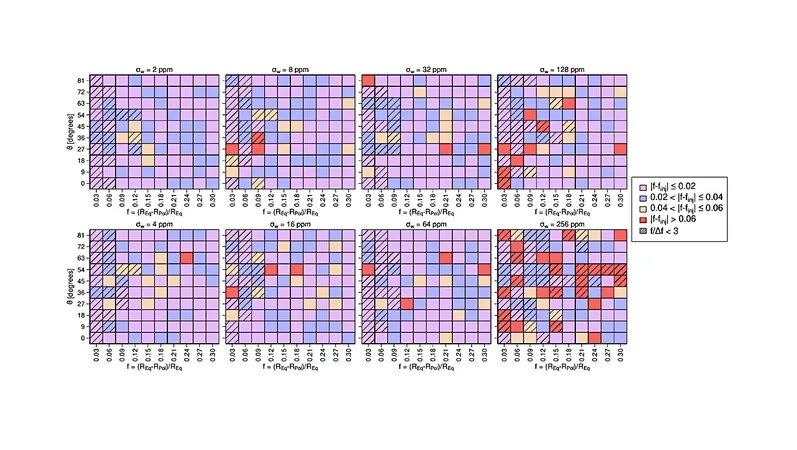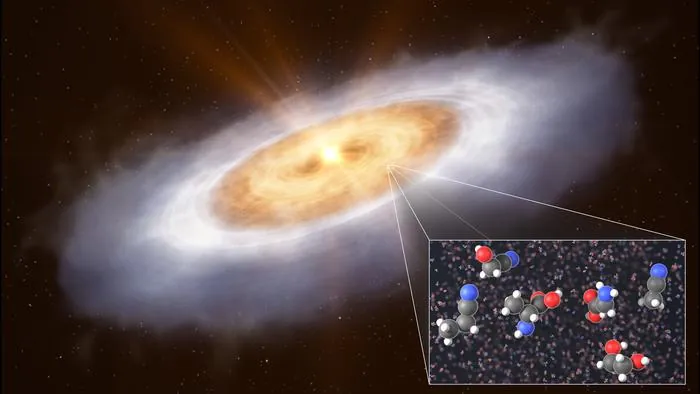
Unveiling the Cosmic Vampire: How Third Stars Help Stellar Thieves Devour their Victims
2025-07-14
Author: Arjun
Astronomers Discover Stellar Accomplices in Cosmic Vampire Systems
For years, astronomers have been captivated by the eerie phenomenon of cosmic vampires—dead stars, known as white dwarfs, that ravenously strip plasma from their living companions. New research unveils the shocking possibility that these stellar fiends might be receiving help from a third star in their systems, akin to a Renfield aiding Dracula in his dark pursuits.
The Lifecycle of Cataclysmic Variables
These intriguing systems, referred to as cataclysmic variables, showcase how a white dwarf— the remnant of a sun-like star—accumulates stolen matter until it reaches a cataclysmic end. This gathering of stolen matter can eventually lead to a supernova, wiping the entire system from existence. While the end game of these cosmic vampires has been largely understood, this new research suggests an exciting twist in their origin story.
A New Twist in Stellar Dynamics
"Our findings reveal an alternate formation pathway for cataclysmic variables," stated Kareem El-Badry, a researcher at the California Institute of Technology (Caltech). "Sometimes, a lurking third star is crucial." Historically, it has been accepted that cataclysmic variables arise from two stars entwined in a 'common envelope'—a gas shell that spirals them together, but this research challenges that notion.
Third Stars as Cosmic Matchmakers
In many cases, binary star systems form when the gravitational embrace of a gas envelope draws two stars together. This leads to one star swelling into a red giant, engulfing its companion, and subsequently transforming into a white dwarf.
El-Badry, along with grad student Cheyanne Shariat, began to ponder how these dynamics would shift in the presence of a third star. Utilizing the European Space Agency's Gaia mission—which tracked billions of stars to create a 3D cosmic map—they identified 50 cataclysmic variables residing within triple-star systems, suggesting that around 10% of these vampires have a cosmic accomplice.
Simulations Uncover Hidden Dynamics
To explore these cosmic interactions further, the researchers ran extensive simulations—2,000 hypothetical models of triple-star systems. Astonishingly, in 400 of these simulations, cataclysmic variables formed without the typical common envelope phase, demonstrating that the third star played a pivotal role in forcing the two main stars closer together.
Shariat elaborated, "The gravity from the third star causes the binary stars to adopt a highly eccentric orbit, leading the companion star to drift closer to the white dwarf. This modifies the orbit without requiring them to spiral in through a gas envelope." In another 60% of their simulations, the common envelope phase was still present but initiated by the third star.
A New Understanding of Stellar Formation
Adjusting for a more representative stellar population reflective of the Milky Way, El-Badry and Shariat proposed that a staggering 40% of cataclysmic variables form in triple systems—four times higher than earlier estimates. This revelation opens a new chapter in our understanding of stellar evolution.
Moreover, their findings indicated that white dwarfs in these systems often begin with the third star positioned over 100 times the distance from Earth to the sun, hinting that cosmic dynamics are more complex than previously thought.
Revolutionizing Our View of the Cosmos
El-Badry concluded, "For decades, researchers adhered strictly to the common-envelope evolution model to explain the formation of cataclysmic variables, but no one had considered the significant role of triples until now!" Their groundbreaking work not only challenges established theories but also ushers in a riveting era of cosmic discovery.






 Brasil (PT)
Brasil (PT)
 Canada (EN)
Canada (EN)
 Chile (ES)
Chile (ES)
 Česko (CS)
Česko (CS)
 대한민국 (KO)
대한민국 (KO)
 España (ES)
España (ES)
 France (FR)
France (FR)
 Hong Kong (EN)
Hong Kong (EN)
 Italia (IT)
Italia (IT)
 日本 (JA)
日本 (JA)
 Magyarország (HU)
Magyarország (HU)
 Norge (NO)
Norge (NO)
 Polska (PL)
Polska (PL)
 Schweiz (DE)
Schweiz (DE)
 Singapore (EN)
Singapore (EN)
 Sverige (SV)
Sverige (SV)
 Suomi (FI)
Suomi (FI)
 Türkiye (TR)
Türkiye (TR)
 الإمارات العربية المتحدة (AR)
الإمارات العربية المتحدة (AR)